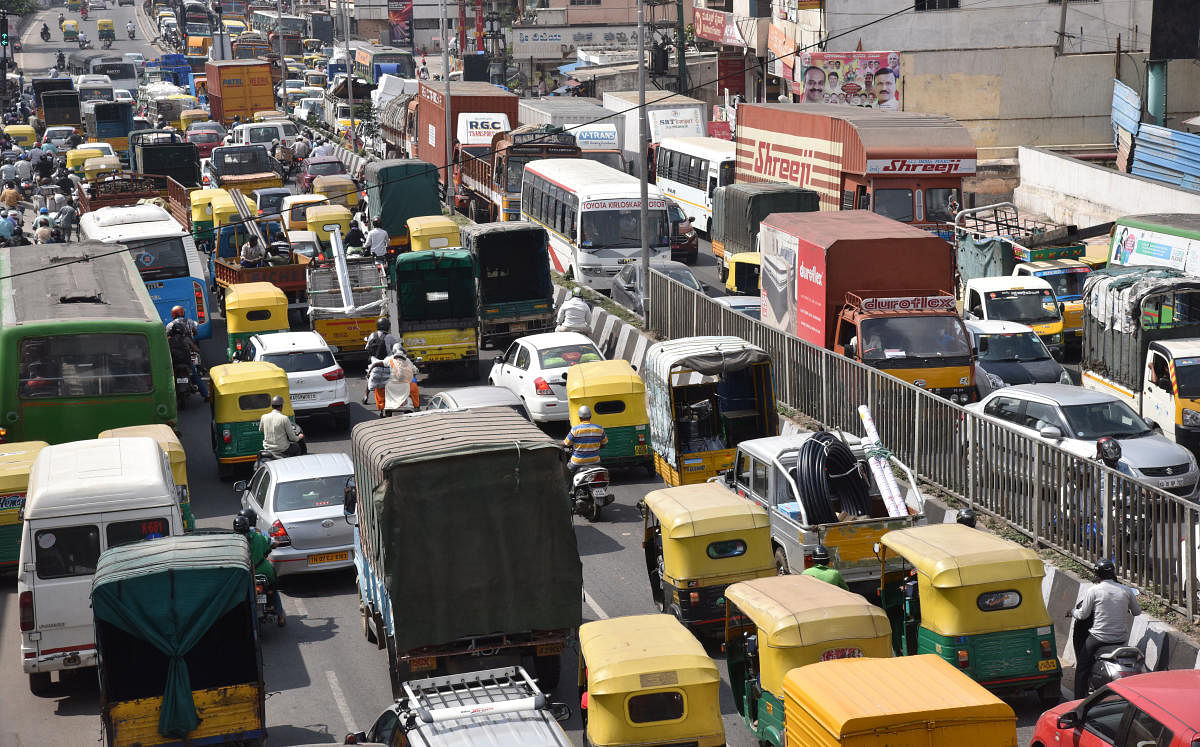
Bengaluru has pipped Chennai in slowest traffic. Bengaluru's average traffic speed dropped by a significant 3.2 km per hour in 2017 to 17.2 km per hour. The drop has been the highest in the country.
The city had an average traffic speed of 20.4 km per hour in 2016, the second lowest in the country.
Chennai, which moved to the second last slot this year, has seen a meagre decline, - 0.7 km per hour (3.6%) in its average speed - to 18.9 km per hour.
According to experts, a disproportionate increase of roads vis-a-vis traffic is causing this slowdown in Bengaluru. "Around 60% of roads in Bengaluru are narrow, and around 4,000 new vehicles are registered every day. Frequent junctions further bring down the traffic speed. In fact, on the Outer Ring Road, the average speed is about 4.4 km per hour," M N Sreehari, an urban transport expert, said.
There are close to 49,000 junctions in Bengaluru.
Police declined to comment on the issue. "We have not seen the Ola study. It is inappropriate to comment on such things without reading it," R Hithendra, Additional Commissioner of Police (Traffic), told DH.
Cab drivers blame the aggressive expansion of aggregators like Ola and Uber for the mess. "These firms are doling out unnecessary offers to woo more drivers than the demand in the city," said Tanveer Pasha, president, Ola, TaxiForSure and Uber Drivers' and Owners' Association.
Transport Department figures show there are 72 lakh registered vehicles in the city as on date. As per estimates, on average, Bengaluru's roads bear a load of close to 15 lakh vehicles every day.
There are 1,51,911 registered taxis in the city, government figures show.
Many drivers whom DH spoke to complained about declining profits because of oversupply. The city is home to 64,83,984 non-transport vehicles; a whopping 98% (63,68,256) are private two-wheelers and four-wheelers. Out of 14 lakh four-wheelers, around 85,000 are estimated to be attached to Ola and Uber. According to Pasha, the need is not more than 40,000.
Only Ola and Uber have been granted aggregator licence by the Transport Department. But sources said two more firms had applied for the licence and were about to get it.
Ola countered Pasha's suggestion, saying its option under the 'Farak Padta Hai' campaign has helped a lot in car-pooling.
Among the metros, Delhi, backed by a sprawling metro infrastructure, continues to top the chart of average speed, albeit with a small decline. The national capital clocked an average speed of 25 km per hour, followed by Mumbai (20.7 km per hour) and Pune (19.4 km per hour). Nationally, there has been a decline of 2.9 km per hour in average speed.